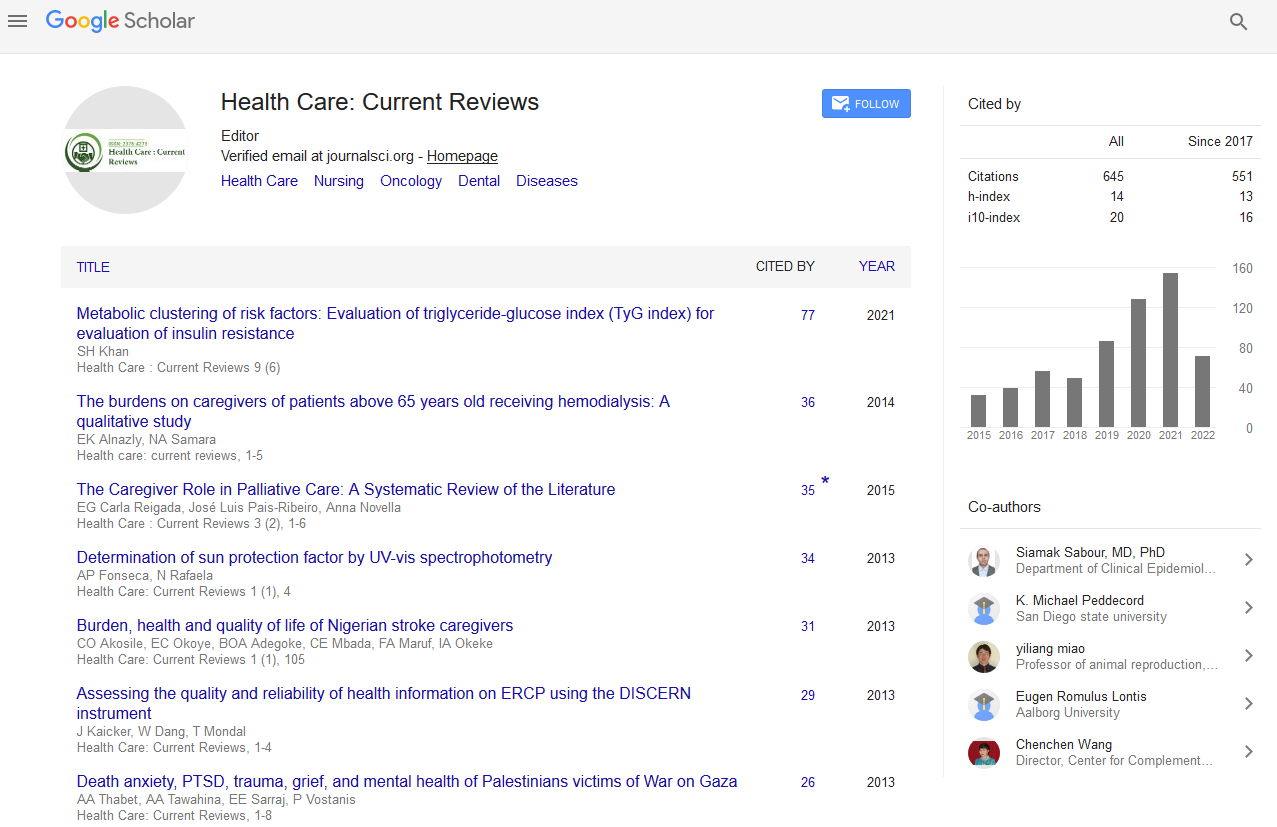PMC/PubMed Indexed Articles
Indexed In
- Open J Gate
- Academic Keys
- RefSeek
- Hamdard University
- EBSCO A-Z
- Publons
- Geneva Foundation for Medical Education and Research
- Google Scholar
Useful Links
Share This Page
Journal Flyer

Open Access Journals
- Agri and Aquaculture
- Biochemistry
- Bioinformatics & Systems Biology
- Business & Management
- Chemistry
- Clinical Sciences
- Engineering
- Food & Nutrition
- General Science
- Genetics & Molecular Biology
- Immunology & Microbiology
- Medical Sciences
- Neuroscience & Psychology
- Nursing & Health Care
- Pharmaceutical Sciences
Abstract
Is the Unavailability of Partograph a Reason for its Low Usage? The Case of Jimma University Medical Center
Belina S, Negro B, Getachew M, Alemu T and Girma E
Background: Partograph is a pre-printed paper that provides a visual display of recorded observations carried out on mother and fetus during labor process. It enables health professionals to monitor feto-maternal wellbeing and progress of labor. It also alerts the care providers to take timely intervention when required. Despite its importance and WHO recommendation its utilization is inadequate in low and middle income countries. Therefore, the aim of this study is to explore barriers for utilization of partograph during labor delivery at Jimma University Medical Center 2017.
Methods: A programmatic research design was employed. Data was collected through key informant interview and client record review. A purposive sampling technique was used to select the key informants and random sampling was used to select the client’s document. Data were collected using interview guide and check list for record review.
Results: Data were analyzed qualitatively by means of the ATLAS.ti 7 software and four themes emerged namely, type of the institution, perception of care providers to ward partograph, previous trends, and absence of follow up and control mechanism. The study found that some health workers were more informed about the importance of partograph, others have negative attitude on its utilization. The study also revealed the use of partograph was determined by diverse factors like type of the institution, perception of care providers toward partograph, previous situation (trends), lack of controlling mechanism. Therefore, availing monitoring mechanisms and periodic review of trends of utilization reviewing trends, securing sufficient staffing, and training to brining all care providers under same umbrella as some of the health workers had little knowledge which was evidenced by record review and negative attitude are recommended.


